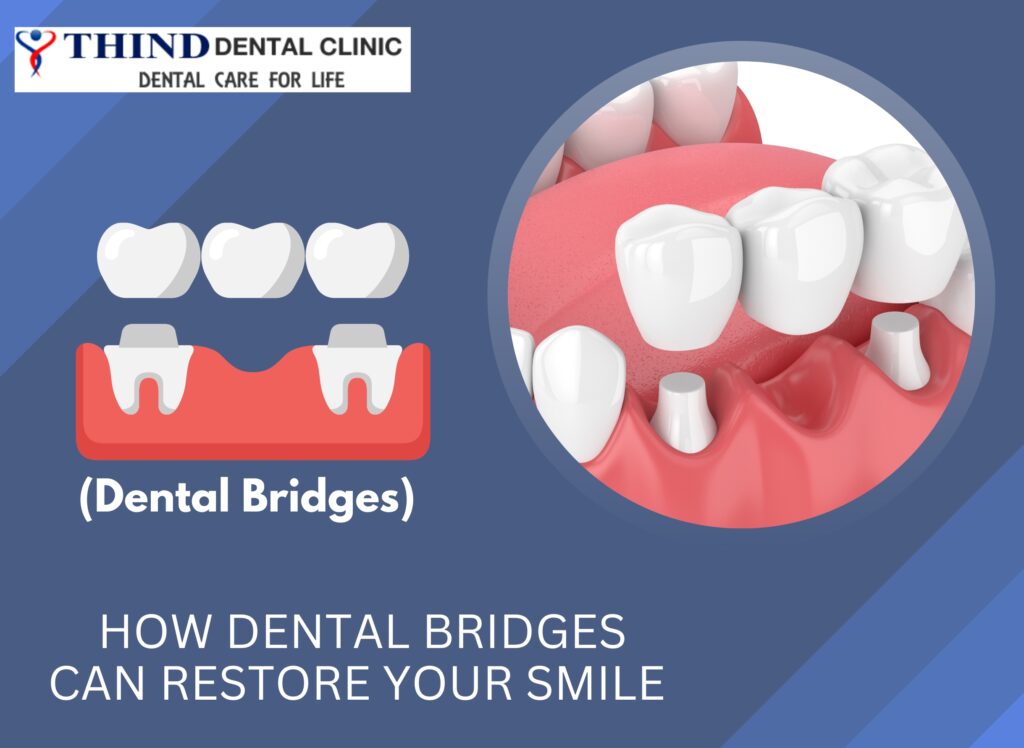Your smile is a powerful tool. It can brighten someone’s day, make a lasting impression, and convey your emotions without saying a word. However, when you have missing teeth, that confidence in your smile might diminish. Dental bridges are an excellent solution to restore your smile’s radiance and renew your self-assurance. In this article, we’ll explore how dental bridges work, their benefits, and why they’re a popular choice for replacing missing teeth.
Understanding Dental Bridges
What Are Dental Bridges?
Dental bridges are prosthetic devices that are custom-made to replace missing teeth. They consist of one or more artificial teeth, known as pontics, which are anchored in place by crowns on adjacent teeth or dental implants. These adjacent teeth, also called abutment teeth, provide support and stability for the bridge.
Types of Dental Bridges
1. Traditional Bridges: These are the most common types of dental bridges. They consist of one or more pontics held in place by dental crowns on adjacent teeth.
2. Cantilever Bridges: When there are adjacent teeth on only one side of the gap, a cantilever bridge may be used. The pontic is supported by a single crown.
3. Maryland Bonded Bridges: In this type of bridge, the pontic is held in place by a metal or porcelain framework bonded to the backs of adjacent teeth.
4. Implant-Supported Bridges: When multiple teeth are missing, implant-supported bridges offer a secure solution. To support the bridge, dental implants are surgically implanted in the jawbone.
The Benefits of Dental Bridges
1. Restored Appearance
Dental bridges provide a natural and aesthetically pleasing appearance. The pontics are designed to match the color, shape, and size of your natural teeth, making it nearly impossible to distinguish the artificial teeth from the real ones.
2. Improved Speech
Missing teeth can affect your speech by altering the way air flows over your tongue and through your teeth. Dental bridges help restore your ability to speak clearly.
3. Enhanced Chewing Function
With missing teeth, chewing certain foods can be challenging. Dental bridges allow you to enjoy a complete range of foods without discomfort, improving your nutrition and overall health.
4. Preventing Teeth Shifting
When a tooth is lost, adjacent teeth may start shifting into the gap, causing misalignment. Dental bridges maintain tooth alignment by “bridging” the gap.
5. Boosted Self-Confidence
Regaining your full grin will boost your self-esteem and confidence tremendously. You’ll feel more comfortable in social and professional situations.
6. Preservation of Facial Shape
Missing teeth can lead to sagging facial muscles, making you appear older. Dental bridges help maintain your facial shape and a youthful look.
The Bridge Placement Process
Receiving a dental bridge typically requires multiple visits to your dentist. Here’s an overview of the process:
1. Consultation: Your dentist will evaluate your oral health, discuss treatment options, and determine the best type of bridge for your needs.
2. Tooth Preparation: If you’re getting a traditional bridge, the adjacent teeth (abutment teeth) will be prepared by removing a portion of the enamel. This step allows the crowns to fit properly. If you’re receiving an implant-supported bridge, dental implants will be surgically placed in the jawbone.
3. Impressions: Your dentist will take impressions of your teeth to ensure a precise fit for the bridge.
4. Temporary Bridge: While your permanent bridge is being fabricated in a dental laboratory, you may receive a temporary bridge to protect the exposed teeth and gums.
5. Bridge Placement: Once the permanent bridge is ready, your dentist will place and adjust it for a perfect fit. This process may take several visits to ensure optimal comfort and function.
6. Final Evaluation: After placement, your dentist will evaluate your bite and make any necessary adjustments.
Caring for Your Dental Bridge
Maintaining your dental bridge is crucial for its longevity. Here are some essential care tips:
- Oral Hygiene: Regular brushing and flossing are essential to prevent plaque buildup and protect your bridge and adjacent teeth from decay.
- Dental Check-ups: Keep up with your dental appointments. Your dentist will ensure your bridge is in good condition and make any necessary adjustments.
- Diet: Be mindful of your diet. Avoid eating anything too firm or sticky because it could harm your bridge.
Conclusion
Dental bridges are a reliable solution for restoring your smile’s brilliance and maintaining oral health. They offer numerous benefits, from improved appearance and self-confidence to enhanced functionality. If you’re missing teeth or have gaps in your smile, consult with your dentist to explore the possibility of dental bridges. Regain your confidence, eat your favorite foods with ease, and share your smile with the world.
At Thind Dental Clinic in Ludhiana, we specialize in restorative and cosmetic dentistry, including dental bridges. Contact us today to schedule a consultation and take the first step toward bridging the gap in your smile.
For additional information or to arrange an appointment with us
You can contact us at +91-92568-92568
or visit us at:
THIND DENTAL CLINIC
11-12-13-14 H.I.G Market, Opposite Water Tank, Ludhiana, Punjab 141010.
Also Read:
Single Sitting Procedure: Painless and Affordable Dental Care at Thind Dental Clinic
Dental Care for Children: Expert Tips for Parents on Caring for Your Child’s Teeth
The Importance and Benefits of Regular Dental Checkups: Ensuring Optimal Oral Health
Professional Dental Implants: Restoring Smiles with Precision and Care at Thind Dental Clinic in Ludhiana

 Timings
Timings


